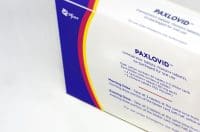Deaths from prescription drug overdoses increase
The number of deaths caused by unintentional overdoses of prescription drugs (primarily painkillers) is rising, according to researchers from the Centers for Disease Control and Prevention. Many of these deaths resulted from using drugs prescribed for other people. One of the researchers urges physicians and pharmacists to “counsel patients not only about the risk of overdose to themselves, but about the risks to those with whom they might share their drugs.” Opioids were the most common drugs used, accounting for 93% of the deaths.
http://jama.ama-assn.org/cgi/content/short/300/22/2613
Genetic variant may reduce response to clopidogrel and increase cardiovascular risk
According to three new studies, variants in the gene that encodes the cytochrome P4502C19 enzyme (CYP2C19) may increase cardiovascular risk and reduce response to the antiplatelet drug clopidogrel (Plavix). In one study, adults exposed to clopidogrel who carried at least one CYP2C19 reduced-function allele had lower blood levels of the drug’s active metabolite and reduced platelet aggregation. Among patients with acute coronary syndromes who’d received clopidogrel, carriers of CYP2C19 alleles had a greater risk of major cardiovascular events than noncarriers. In a second study of patients given clopidogrel after myocardial infarction (MI), CYP2C19 variants were linked to a higher risk of cardiovascular outcomes. The third study also found a higher incidence of cardiovascular events among patients with the genetic variant who had experienced MIs and were receiving clopidogrel.
http://content.nejm.org/cgi/content/full/NEJMoa0809171
http://content.nejm.org/cgi/content/full/NEJMoa0808227
http://www.thelancet.com/journals/lancet/article/PIIS0140-6736(08)61845-0/fulltext
Tainted weight loss pills pose serious health risks
The Food and Drug Administration (FDA) is warning consumers not to buy or use any of more than 25 different products marketed for weight loss because they contain undeclared, pharmaceutically active ingredients that pose health risks. The products include 2 Day Diet, 3X Slimming Power, GMP, Perfect Slim, ProSlim Plus, Slim Express, Slimtech, Somotrim, Superslim, Triple Slim, and Venom Hyperdrive 3.0. The undeclared active ingredients include sibutramine (a controlled substance that can cause high blood pressure, seizures, MI, or stroke), rimonabant (an unapproved drug linked to increased risk of depression and suicidal ideation), phenytoin, and phenolphthalein. These products, some of which are marketed as dietary supplements, are sold on various websites and in retail stores. Some claim to be “natural” or to contain only “herbal” ingredients. The FDA advises consumers who have used them to stop taking them and consult their healthcare professionals immediately.
http://www.fda.gov/bbs/topics/NEWS/2008/NEW01933.html
FDA advisory panel restricts two asthma drugs
An FDA advisory panel has voted to ban Serevent (salmeterol) and Foradil (formoterol) as monotherapy for asthma. When used long term without an inhaled corticosteroid, these long-acting beta agonists may increase the risk of death. (However, the drugs will stay on the market to treat chronic obstructive pulmonary disorders.) The panel also voted to continue allowing the use of Symbicort (formoterol plus budesonide) and Advair (salmeterol plus fluticasone) in adults. These combination drugs contain both steroids and long-acting beta agonists.
http://www.webmd.com/asthma/news/20081211/fda-panel-urges-restrictions-on-2-asthma-drugs
Long-term use of two antidiabetic drugs increases fracture risk in women
Women on long-term rosiglitazone (Avandia) or pioglitazone (Actos) therapy to treat type 2 diabetes have twice the risk of bone fractures. Among elderly, postmenopausal women (about age 70) with type 2 diabetes who take these drugs for 1 year, one additional fracture would occur for every 21 women. Among younger women (around age 56), use of these drugs for 1 year or longer would lead to one additional fracture for every 55 women. Researchers speculate the drugs may replace bone marrow with fat cells.
http://www1.wfubmc.edu/news/NewsArticle.htm?ArticleID=2525
Epilepsy Society disputes FDA finding on anticonvulsants
According to the American Epilepsy Society (AES), the FDA’s recent suicide risk alert for anticonvulsants is based on flawed data analysis and could have negative consequences for patients. The FDA is mandating a label change for all anticonvulsants to warn of an increased risk of suicidal thoughts and behavior. However, the AES believes the FDA excluded a large portion of significant data in its review of clinical trials, causing inaccurate measurements. According to the AES, patients who are scared by the FDA’s alert into stopping the drugs have a much higher risk of accidents or even death from seizures than they do of suicide. At a meeting, AES physicians presented their own data showing that the suicide risk is extremely small compared to the potential danger of epileptic patients going untreated.
http://www.fda.gov/bbs/topics/NEWS/2008/NEW01927.html
http://www.medicalnewstoday.com/articles/132482.php
http://www.fda.gov/CDER/Drug/infopage/antiepileptics/default.htm


















